THE MODERN conservation movement is tasked with an enormous mandate: to safeguard global biodiversity and natural resources for future generations. But with threats such as climate change, habitat loss, pollution, and poaching all vying for attention, conservationists are faced with the difficult task of prioritizing the most effective and impactful projects for limited conservation funding.

Which species are the most important to save? Photo credit: The Guardian.
This puts conservationists in a difficult position – with so many species and ecosystems in dire need, which ones are the most important to save?
To make each conservation dollar as impactful as possible, governments and NGOs often prioritize efforts to protect popular endangered species, such as lions, tigers, elephants, and pandas, known collectively as flagship species.
Given the broad appeal and typically broad habitat requirements of flagship species, efforts to protect them often provide spillover benefits for other threatened or endangered species sharing the same region or niche.
Flagship species are almost always iconic and often hold special cultural significance, making them an asset for groups working to rally the public to support conservation.
Furthermore, the call to protect a flagship species can raise awareness about global environmental threats such as illegal wildlife trade, deforestation, or climate change. By using the plight of one species to highlight the plight of others, flagship species serve as powerful ambassadors for the conservation movement.
Below are the stories of nine such ambassadors. From raising awareness to averting extinction, programs to protect these iconic animals have benefited thousands of other species. Far from being just cute and cuddly, popular or iconic, these animals represent conservation success stories. They are flagship species.
1. Polar Bears
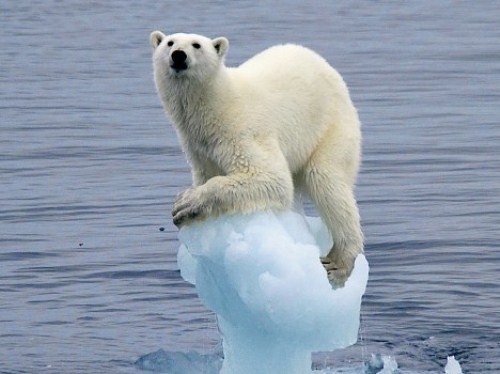
This famous photo of a polar bear clinging to a shrinking iceberg became a powerful symbol of climate change. By raising public awareness, the polar bear symbol helped to propel world leaders to create a roadmap for reducing global carbon emissions. Photo credit: Arne Naevra.
As their habitat melts away from under their feet, polar bears have become synonymous with climate change. Scientists have told us that climate change will alter weather patterns and ocean temperature, and potentially lead to environmental and social turmoil. However, such large-scale consequences can be difficult for the public at large to appreciate. Polar bears play a valuable role in the fight against climate change by inspiring public sympathy for thousands of species that will literally lose their homes as the planet warms. As public support for decisive climate action increases and world leaders finalize the Paris Climate Agreement, the symbol of the stranded polar bear remains as important as ever for continued support for swift climate action.
2. Bald Eagles
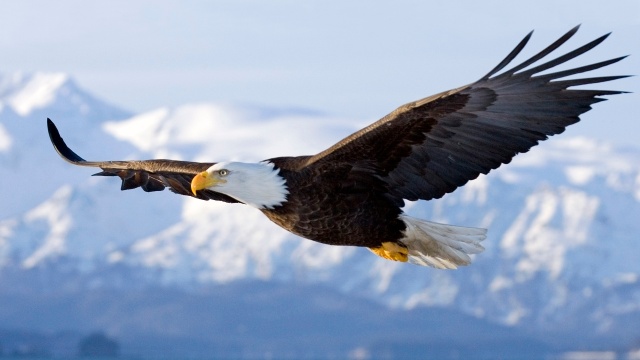
The bald eagle’s precipitous population decline in the 1960s prompted the US to ban DDT and sparked the environmental movement in the 1970s, protecting countless other species and ecosystems in the process. Photo credit: AlaskaStock/Corbis.
Rachel Carson documented the effect of DDT in her 1962 book Silent Spring, shining a national spotlight on the ecological dangers of pesticides. Silent Spring focused on the effect of DDT on birds, particularly bald eagles, which suffered massive population declines in the mid 20th century due to bioaccumulation of DDT. Using the national animal of the United States as a symbol for her environmental message, Carson was able to change national pesticide policy and public opinion on the environment. The movement she started is credited with the US ban of DDT in 1972, the recovery of the bald eagle, and the eventual formation of the US Environmental Protection Agency.
3. Manatees
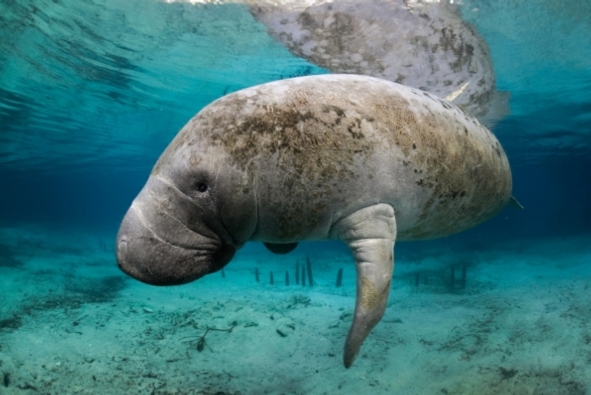
Boating speed limits reduce the number of manatee-boat collisions and protect other species commonly killed by boats, including dolphins and sea turtles. Photo credit: Carol Grant, Getty Images.
The bulbous and beloved West Indian Manatee recently made headlines for being removed from the endangered species list. The decision to relist the species as threatened, rather then endangered, reflects the manatee’s impressive recovery since 1991, when only 1,267 were thought to exist in Florida. The population is now estimated at 6,300 individuals, an increase of 500%. The manatee’s recovery is owed largely to a reduction in threats from human activities such as boating, water sports, and fishing. By imposing speed limits for boats and regulating human activities in certain coastal areas, regulators were able to successfully protect the manatee as well as other species such as sea turtles, alligators, and dolphins, which share the same habitat.
4. Elephants
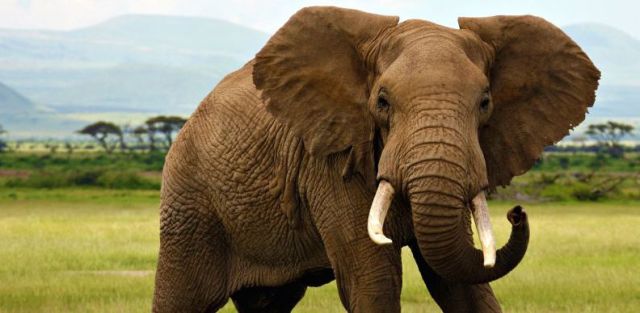
Elephants are the flagship species of CITES, the widely successful treaty regulating the international trade of endangered species. Photo credit: Rainforest Alliance.
The plight of elephants is intertwined with poaching and the wildlife trade, making them a perfect flagship species for CITES, the broad reaching treaty on the international trade of endangered species. CITES has prevented countless plant and animal extinctions by establishing a regulatory framework to control the trade of over 35,000 species worldwide, including elephants, rhinos, tigers, and sharks. Under a CITES ivory ban in 1989, African elephants rebounded as ivory demand and poaching diminished. Unfortunately, recent legal loopholes have led to an uptick in poaching and wildlife crime, causing elephant populations to decline again. But even in the face of poaching, elephants remain a flagship species. The European Union funded conservation project MIKES (Minimizing the Killing of Elephants and other Endangered Species) draws on the plight of elephants to fund anti-poaching efforts, protecting a range of other species in the process.
5. Sea Turtles

Floating plastic bags are commonly ingested by sea turtles, who mistake the unfamiliar objects for jellyfish, their natural food source. Sea turtles are commonly used by anti-litter campaigns to raise public awareness about pollution. Photo credit: Houston Zoo.
Billions of pounds of plastic currently clog the ocean in the form of bags, water bottles, wrappers, and micro-plastic fragments. These pollutants harm many types of sea creatures from seals to sharks to sea birds, but none receive more attention and public sympathy than sea turtles. A recent viral video of a sea turtle getting a plastic straw removed from its nostril helped to highlight the dangers of plastic pollution in a visceral and emotional way. Organizations such as SEE Turtles, the Plastic Pollution Coalition, and ReefHQ rely on similar imagery as well as sea turtle factoids to raise awareness about the dangers of single use plastics. And like many environmental issues, awareness spurns action: in response to pressure from environmental groups, President Obama banned the use of plastic microbeads earlier this year.
6. Tigers

Tigers and other species with broad habitat requirements are known as umbrella species because efforts to protect them end up safeguarding thousands of other species that inhabit the same ecosystem. Photo credit: Defenders of Wildlife.
From tropical forests to swamps to mountain ranges, tigers occupy a wide range of habitats and ecosystems across South and Southeast Asia. While this broad geographic range subjects tigers to a multitude of threats, it also makes them invaluable as a flagship species. Thanks to their cultural significance and general popularity, tigers enjoy high levels of conservation funding compared to other endangered species, with millions of dollars directed towards tiger habitat preservation, human-tiger conflict reduction, and public education annually. This funding is beginning to achieve results, as tiger populations in India are now increasing for the first time in a century. But it also results in more conservation and habitat protection for thousands of other species that live with tigers throughout Asia, making tigers an umbrella species as well as a flagship.
7. Kiwis
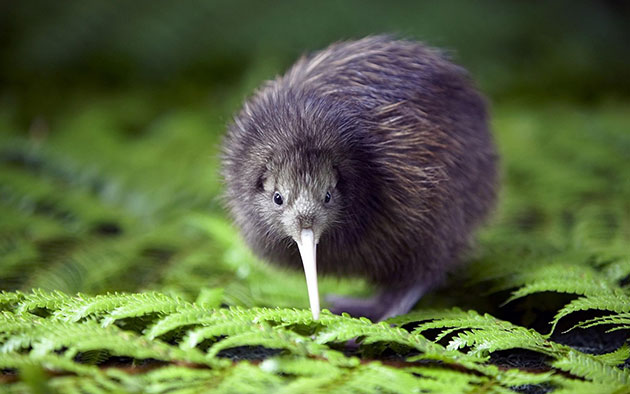
The kiwi, a nocturnal flightless bird that resembles its namesake fruit, is a national symbol of New Zealand and the face of invasive species control programs across the island nation. Photo credit: New Zealand tourism.
Unlike tigers, the kiwi occupies a small geographic range. Found only in New Zealand, the kiwi is an endemic species, a flightless bird, and an evolutionary oddity. It is also the national symbol of New Zealand, whose citizens regularly refer to themselves as “kiwis”. The national devotion to the iconic bird boosts efforts to rid the island of invasive species, like rats, cats, and stoats, that prey upon kiwis and many other animals native to the island. In response to the kiwi’s plight, New Zealand has instituted strict customs laws to prevent the introduction of invasive species, trapping programs to control invasive predators, and campaigns such as Kiwis for Kiwi that rely on national pride to promote conservation. The approach appears to be working: since 1998, populations of adult kiwis have doubled and ecosystem health has improved in regions of the island undergoing invasive pest management.
8. Sea Otters
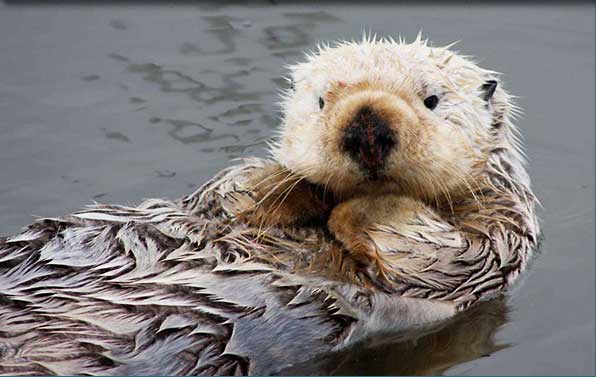
Sea otters were the public face of the Exxon Valdez oil spill in 1989. The public outcry generated by images of oil soaked otters is part of the reason sea otters and their native kelp forests enjoy the environmental protection they do today. Photo credit: Monterey Bay Aquarium.
After being pushed to the brink of extinction by the fur trade, sea otters rebounded during the 20th century, repopulating two thirds of their historic range along the Pacific coast. With the end of the fur trade, the biggest remaining threat to sea otters is habitat destruction caused by commercial fishing and oil spills. To minimize these threats, the United States, Canada, and Russia have established a network of marine protected areas to safeguard sea otter habitat. By protecting the kelp forests where sea otters live, a diverse array of marine life including sharks, crabs, sea lions, lingcod, garibaldi, rockfish, and sea urchins are preserved as well. The presence of sea otters benefits kelp forests in other crucial ways; as a keystone species, sea otters keep the food web in check and the entire ecosystem in balance.
9. Pandas
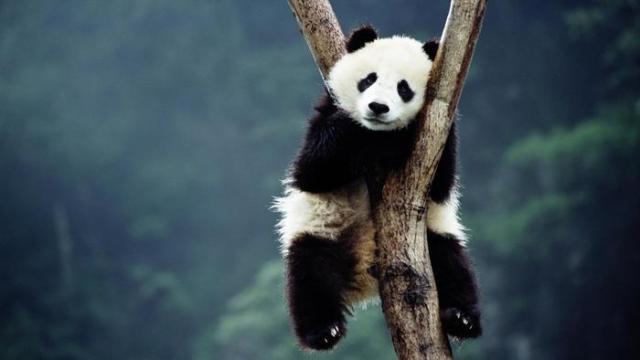
The giant panda is the logo of the World Wildlife Fund, one of the largest conservation organizations in the world. Photo credit: Livebooklet.com.
From habitat protection in China to captive breeding programs abroad, millions of dollars are spent each year on panda conservation. Because of these successful programs, wild panda populations have increased 17% over the past decade. But as one of the most iconic flagship species in the world, the popularity of the panda brings in even more money for other species. The giant panda serves as the mascot, brand, and logo of the World Wildlife Fund, one of the largest conservation organizations in the world. In 2015, the World Wildlife Fund spent $246 million on conservation programs, the majority of which was raised through charitable contributions. While WWF works on a broad range of conservation topics, the plight of flagship species captivates donors and draws in money. The giant panda and other flagship species make WWF’s sustainable development, protected area management, and climate change mitigation projects possible, protecting pandas and thousands of additional species in the process.
This list of flagship species is far from complete. Can you think of any successful flagship species conservation programs that weren’t mentioned above? Share your thoughts in the comments below.
LEARN MORE
- How are flagship species selected by conservation organizations?
- Learn the terminology – Flagship, indicator, keystone, and priority species
- Are Conservation Groups Right to Prioritize ‘Iconic’ Species?
- What is the difference between a threatened and endangered species?


Good to hear! We are in need of some success.
LikeLiked by 1 person
Reblogged this on Opher's World and commented:
There is so much destruction, overpopulation and deforestation – it is great to hear of some success!
LikeLike
[…] 9 conservation success stories made possible by flagship species […]
LikeLike
[…] Source […]
LikeLike
[…] Source […]
LikeLike
[…] Source […]
LikeLike
[…] Source […]
LikeLike
[…] Source […]
LikeLike
[…] Source […]
LikeLike
[…] Source […]
LikeLike
[…] Source […]
LikeLike
[…] Source […]
LikeLike
[…] Source […]
LikeLike
[…] Source […]
LikeLike
[…] U.S. law for protecting imperiled species, has enabled the recovery of iconic species such as the bald eagle, American alligator, and Florida manatee. While lauded by some as the most successful environmental law in U.S. history, the Act faces […]
LikeLike
[…] Source […]
LikeLike
[…] Source […]
LikeLike